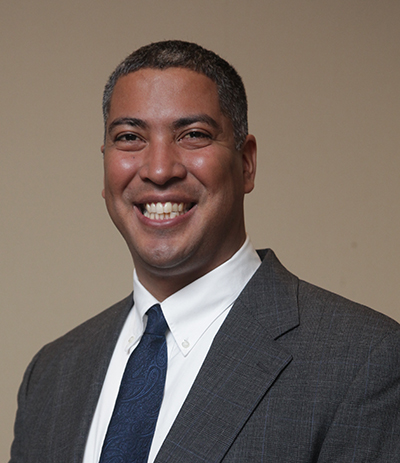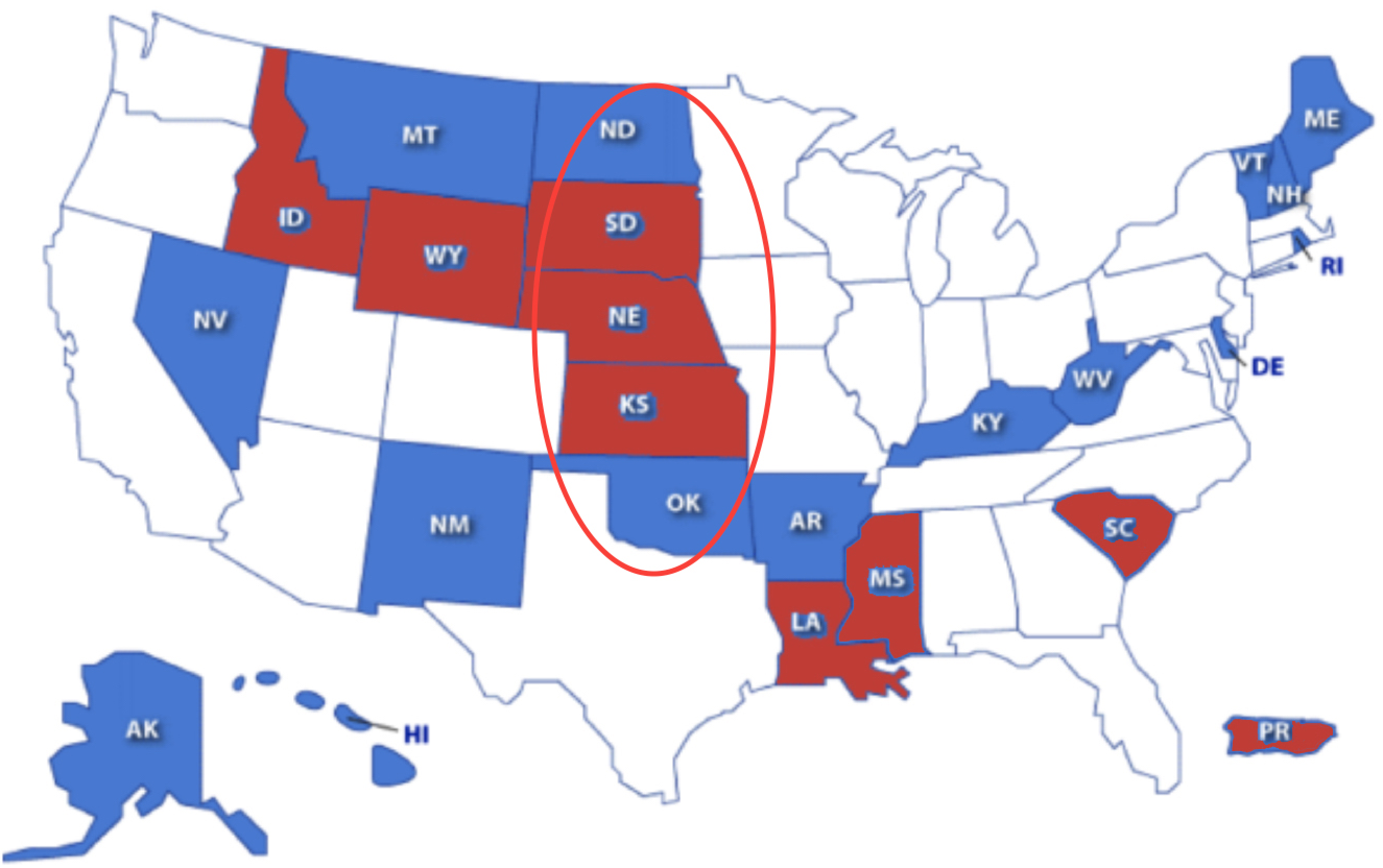Written by Rafael E. Luna, Ph.D.
Executive Director, National Research Mentoring Network
with Jennifer A. Gubbels, Ph.D.
Associate Professor, Biology Department, Augustana University
How do we make careers in biomedical research an attractive option for undergraduates and graduate students? This was the question posed to me and Dr. Kola Okuyemi after our seminar at the Special Populations Research Forum in May 26th, 2017 at the National Institutes of Health. This question has persisted in my consciousness ever since.
As I spend a significant amount of time traveling throughout the United States sharing the good news about NRMN, there are times when I confronted with pleasant surprises. As I share with others about NRMN’s programs, I often find myself learning from the same individuals who I am reaching and would like to include in our national network.
 This June 8th and 9th, Dr. Barb Goodman at the University of South Dakota, Contact PI of the South Dakota Biomedical Research Infrastructure Network (SD BRIN), hosted the Central Region Institutional Development Award (IDeA) Meeting. The Central Region includes members from the IDeA Networks of Biomedical Research Excellence (INBRE)/ Centers of Biomedical Research Excellence (COBRE) from Kansas, Nebraska, Oklahoma, North Dakota, and South Dakota . I was fortunate to speak at this meeting to share the mission and national approach of NRMN. NRMN has begun partnerships with biomedical researchers across the IDeA network (23 States and Puerto Rico), which are funded by NIGMS. At this point, we are partnering with INBRE programs across 9 of these 24 (see the map below with the 9 States/ territory highlighted in red, and Central Region IDeA States within the red oval).
This June 8th and 9th, Dr. Barb Goodman at the University of South Dakota, Contact PI of the South Dakota Biomedical Research Infrastructure Network (SD BRIN), hosted the Central Region Institutional Development Award (IDeA) Meeting. The Central Region includes members from the IDeA Networks of Biomedical Research Excellence (INBRE)/ Centers of Biomedical Research Excellence (COBRE) from Kansas, Nebraska, Oklahoma, North Dakota, and South Dakota . I was fortunate to speak at this meeting to share the mission and national approach of NRMN. NRMN has begun partnerships with biomedical researchers across the IDeA network (23 States and Puerto Rico), which are funded by NIGMS. At this point, we are partnering with INBRE programs across 9 of these 24 (see the map below with the 9 States/ territory highlighted in red, and Central Region IDeA States within the red oval).

During our lunch period, I spoke with Dr. Sheila Caldwell, program director in the Center for Research Capacity Building, where she manages the Native American Research Centers for Health (NARCH), and learned about the impactful work of this NIGMS funded initiative. I was approached by Dr. Jenny Gubbels, an Associate Professor with tenure at Augustana University in South Dakota where she serves as an INBRE PI. As I tend to be the so-called purveyor of NRMN information, I communicated with her that according to NIH’s most recent classifications of groups underrepresented in biomedical research, senior faculty women are underrepresented. She was happy to know this information; however, it was our follow-up conversation that made a considerable impact on me. She told me the story of her mentee an undergraduate student by the name of Jessica ‘Jess’ Roetman. Jenny was a proud mentor of her student Jess, who has worked in her laboratory.
Jess Roetman is from a small town in northwest Iowa and graduated in May of 2017 with a degree in biology from Augustana University in Sioux Falls, South Dakota. In a couple of months, Jess will begin an Interdisciplinary Studies doctoral research program at Vanderbilt University in Nashville, Tennessee. Jess’s interest lies firmly in performing cancer research. When Jess first joined the Gubbels lab in the summer of 2015, she seriously considered attending medical school, but she was undecided. After her first summer in Dr. Gubbels’s laboratory and under a caring, thoughtful mentor, Jess decided that biomedical research would be a better fit for her inquisitive mind. Upon embarking on a career in research, she applied and was accepted to an undergraduate research program at the Mayo Medical School in Rochester, Minnesota. After graduating with her undergraduate degree, this summer before graduate school she is working fairly independently in the Gubbels lab and essentially functions as a graduate student, teaching other undergraduates, and needing very little supervision. Other undergraduate students who were healthcare field minded, yet after receiving mentoring from the Augustana faculty have decided to pursue their PhD after doing summer research at Augustana University include Tyson Lager, a student from Freeman, SD (population 1,300) who was considering the application process to medical school, then worked doing research at Augustana for three summers and went on to graduate school to pursue his Ph.D. at Notre Dame. AU class of 2011 undergraduate student Rachel Hurley, a resident of Canton, South Dakota originally wanted to go to physical therapy school, but then did research in the chemistry department at “Augie” (a diminutive term of endearment for Augustana University) and is currently pursuing her MD/Ph.D. at the Mayo Medical School.
Since 2010, at least 21 Augie students funded by the IDeA program have completed their undergraduate studies and matriculated into graduate school. Augie has sent 8 students on to MD/Ph.D. programs. In addition, many other Augie IDeA-funded students who have entered medical school have continued doing biomedical research as medical students, positioning them for clinical translational research and persistence in the biomedical research pathway. So perhaps the best answer to the question that I received at NIH’s Special Population Research Forum, should be the following recipe:
- Quality, Culturally Aware Mentoring as a Mentor;
- Hands-on Biomedical Research experiences as Mentees;
- Institutional Commitment to the persistence and exciting path of biomedical research (Being at Augie helps);
- A sense of community of mentors and mentees for biomedical research in the United States.

In the back row, from left to right: Dr. Mark Larson, Dr. Steven Matzner, Dr. Cecelia Miles, Dr. Jenny Gubbels, Jess Roetman, Dr. Paul Egland, and Dr. Rafael E. Luna. In the front row, from left to right: Dr. Seasson Vitiello, and Dr. Brittany Gorres-Martens
Because AU is a small school, we might see the same student during advising, in the classroom, as well as mentor them one-on-one in the research lab. We get to know our students, and more importantly, they get to know us, and are able to see us as people and as scientists, which may make envisioning becoming a scientist more of a reality for them. Some things, like chocolate, are better in small batches.
Each year we have between 30-40 undergraduate biology majors participating in summer research at Augustana, within research hospitals in Sioux Falls or at other institutions within the state and region. In the last year we have expanded our science center to a 125,000 square foot facility that house state-of-the-art research labs, equipment, classatories, active learning classrooms, and a large auditorium for presentations and poster sessions. The building has a substantial space for research which is co-located with teaching spaces allowing for a blending of teaching and research. This space is a physical manifestation of our philosophy of using research as a primary means to teach undergraduates science by having them be scientists.”
Jennifer A. Gubbels